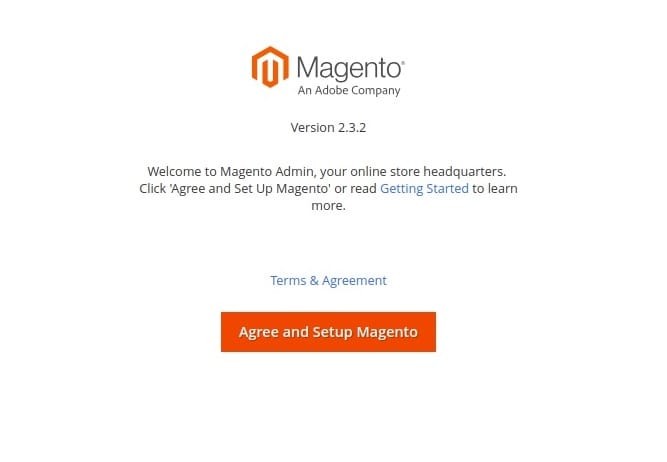
In this tutorial, we will show you how to install Magento on Debian 10. For those of you who didn’t know, Magento is one of the world’s most widely used applications for managing E-Commerce sites. Magento is fully customizable to meet the user’s requirements and allows them to create and launch a fully functional online store in minutes. Magento employs the MySQL relational database management system, the PHP programming language, and elements of the Zend Framework.
This article assumes you have at least basic knowledge of Linux, know how to use the shell, and most importantly, you host your site on your own VPS. The installation is quite simple and assumes you are running in the root account, if not you may need to add ‘sudo‘ to the commands to get root privileges. I will show you the step-by-step installation of the Magento eCommerce platform on a Debian 10 (Buster).
Prerequisites
- A server running one of the following operating systems: Debian 10 (Buster).
- It’s recommended that you use a fresh OS install to prevent any potential issues.
- SSH access to the server (or just open Terminal if you’re on a desktop).
- A
non-root sudo useror access to theroot user. We recommend acting as anon-root sudo user, however, as you can harm your system if you’re not careful when acting as the root.
Install Magento on Debian 10 Buster
Step 1. Before we install any software, it’s important to make sure your system is up to date by running the following apt commands in the terminal:
sudo apt update sudo apt upgrade
Step 2. Installing the LAMP stack.
A Debian 10 LAMP server is required. If you do not have LAMP installed, Please read our previous tutorial to install LAMP Server on Debian 10.
Step 3. Installing Composer.
Now we will need to install Composer to install all necessary Magento components. You can install Composer by just running the following command:
curl -sS https://getcomposer.org/installer | php -- --install-dir=/usr/bin --filename=composer
Step 4. Installing Magento on Debian 10.
Download and install the latest stable version of Magento from Github:
cd /var/www/html git clone https://github.com/magento/magento2.git
Next, check the latest version of Magento with the following command:
cd magento2/ git checkout 2.3.2
Once done, install all the PHP dependencies required by Magento with the following command:
cd /var/www/html/magento2 composer install
Now you need to assign the ownership of the files and folders to Apache users and groups. To do so, the command is:
chown -R www-data:www-data /var/www/html/magento2/
Step 5. Configuring MariaDB for Magento.
By default, MariaDB is not hardened. You can secure MariaDB using the mysql_secure_installation script. you should read and below each step carefully which will set a root password, remove anonymous users, disallow remote root login, and remove the test database and access to secure MariaDB:
mysql_secure_installation
Configure it like this:
- Set root password? [Y/n] y - Remove anonymous users? [Y/n] y - Disallow root login remotely? [Y/n] y - Remove test database and access to it? [Y/n] y - Reload privilege tables now? [Y/n] y
Next, we will need to log in to the MariaDB console and create a database for the Magento. Run the following command:
mysql -u root -p
This will prompt you for a password, so enter your MariaDB root password and hit Enter. Once you are logged in to your database server you need to create a database for Magento installation:
CREATE DATABASE magentodb; GRANT ALL PRIVILEGES ON magentodb . * TO magento@'localhost' IDENTIFIED BY 'Your-Passwd' WITH GRANT OPTION; flush privileges; exit
Step 6. Configuring Apache web server for Joomla.
Create a new virtual host directive in Apache. For example, create a new Apache configuration file named ‘magento.conf’ on your virtual server:
nano /etc/apache2/sites-available/magento.conf
Add the following lines:
<VirtualHost *:80>
ServerName <STORE HOSTNAME>
DocumentRoot /var/www/html/magento2
ErrorLog ${APACHE_LOG_DIR}/magento_error.log
CustomLog ${APACHE_LOG_DIR}/magento_access.log combined
<Directory /var/www/magento2 >
Options FollowSymLinks
AllowOverride All
</Directory>
</VirtualHost>
Now, we can restart the Apache webserver so that the changes take place:
sudo ln -s /etc/apache2/sites-available/magento.conf /etc/apache2/sites-enabled/magento.conf sudo sudo a2enmod rewrite sudo a2ensite magento.conf sudo systemctl restart apache2
Step 7. Installing an SSL certificate.
In this step, we will install the SSL (TLS) certificate. We will use a free Let’s Encrypt certificate that will work in all browsers and the CertBot application to install the certificate and keep it updated:
sudo apt install certbot python-certbot-apache
Next, run the certbot a command that will download the certificate and create the Apache configuration to use the certificate:
sudo certbot --apache
You will then be prompted to enter an email address for the certificate. After you have entered that you must agree to the T&C’s and decide if you want to share your email address with the Electronic Frontier Foundation. This last step is optional. Once successfully, Reload Apache again to load all the new configurations:
sudo systemctl reload apache2
Step 8. Accessing Magento Web Interface.
Magento will be available on HTTP port 80 by default. Open your favorite browser and navigate to https://your-domain.com/ or https://server-ip-address and complete the required steps to finish the installation. If you are using a firewall, please open port 80 to enable access to the control panel.

Congratulations! You have successfully installed Magento. Thanks for using this tutorial for installing the Magento eCommerce platform on Debian 10 Buster system. For additional help or useful information, we recommend you to check the official Magento website.